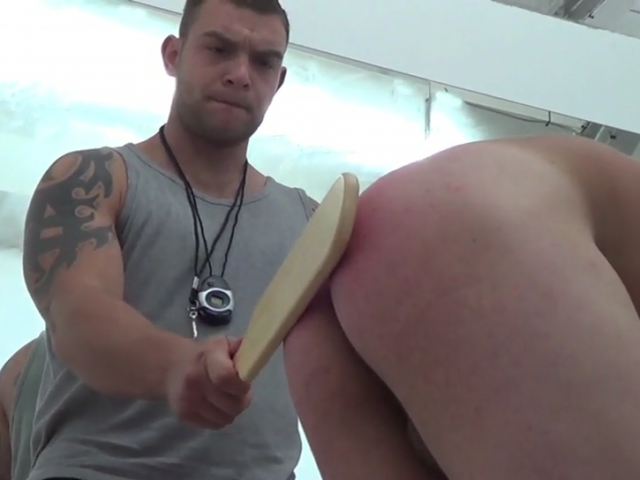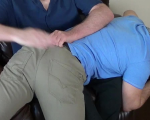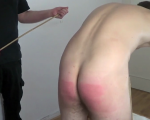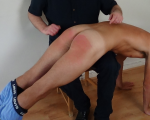5th May 2016 14:00 | LAST COMMENT 428 weeks ago

The discussions on the topic corporal punishment in American schools today is on the decline as is the action itself. Corporal punishment, which is defined as any punishment which physical force is used with the intention of causing pain or harm, is still administered in some American schools. Statistics has shown that over the years there has been a decline in corporal punishment.
The history of corporal punishment in American schools is still a grey area that needs more research to be carried out. It is however believed that corporal punishment was brought by the early settlers from Europe. This was among the many existing practices of their own that they brought to America. There is documentation of whipping with a switch made from branches and twigs in the earliest literature.
in the late 19th century some districts specified the use of certain implements in the punishment of children. Alameda district in California passed a regulation in 1893 requiring the use of leather strap in punishing the kids. The leather strap was to be used in the palm of the hand but this practice did not become popular in the USA. In the New York state it was used to a certain extent as revealed in a case in 1880.

It is not clear when the use of wooden paddle was adopted as an implement in administering punishment, but it remains the most popular instrument in punishing students in America. The earliest mention of the the word paddle was in a news item after school punishment had gone to extreme extents in an Iowan school. They described the paddle as being three feet in length, one and half inch in thickness and one and half inches in width. The paddle was created with the intention of punishing the boy child as described in a newspaper editorial back in 1908. The article described the area of the body that the paddle could be used on as being very suitable and not susceptible to mortal wounds. It was covered with bones abundantly covered with muscular tissues and there was no danger of breaking them. The paddle was also used in the American colleges and by the end of 1930s it had become the main instrument of use in corporal punishment in most districts across several states. Critics reveal that the paddle was more favored than the switch. This is because of its weight and solidity which was effective through thick clothing such as the denim jeans.
It is also documented in history that some paddles had holes drilled in them. This was so as to reduce air resistance while increasing the effectiveness of the punishment. However such acts have since been dissallowed by most school district regulations because there was that it increases the chances of bruising.
The rattan cane had been the preffered instrument of choice in Boston public schools until the 1960s. It was referred to as the Boston rattan and was applied to the students hand. The use of rattan cane was abolished in a Masachusetts schools in 1972 while it was abolished from St. Louis Missouri in 1981 where it had also been in use.

It is important to note that New Jersey was the first state to make an attempt at abolishing corporal punishment in 1867 which was successful. An attempt to reintroduce punishment in schools was made in Newark New Jersey and it was also rejected. This was in 1894 and the instrument of use if it had passed would have been the rattan cane. In 1900 a school in New Jersey got around this by requiring the parents to punish their unruly children.
Rubber hose was also another non standard instrument which was used in administering punishment in American schools. Areas that the instrument was used include New Mexico, Vermont, New York and Ohio.
Big city school districts especially in the north abolished punishment in schools long before the states in which they were located had abolished it. New York City is a good example having abolished Corporal punishment in schools in 1870 while in New York state it was discontinued in 1985.
The use of physical punishment in college and university may seem surprising to many but it happened. Nortwestern University in Chicago had spanking of students being carried out by the campus police while the at University of Missouri it was carried out by the senior students who had official approval from the school. At the University of Missouri it was a tradition that had been started in 1905 and was upheld by a vote of the student body in 1920. Spanking was also done at the University of Washington in Seattle. It was however banned in 1914.

Spanking and paddling of students by the schools had been a topic of discussion over the years. The contentious topic was brought before the US supreme court. The supreme court ruled that paddling or spanking of students by school authorities or teachers is lawful where it has not been explicitly outlawed by the local authorities. A decision that still stands up to date.
Over the recent years, punishment incidences in American schools has sharply declined. Only 31 states have abolished punishment in public schools while it is permitted in the other 19 states. In Arkansas, Alabama and Mississippi it remains a widespread practice. In the following six states; Oklahoma, Lousiana, Tennesse, Texas, Georgia and Missouri, punishment is a routine but mostly in rural or small towns. The incidences of punishment in schools is close to negligible in proportion to school enrollment in the following states; Wyoming, Arizona, South Carolina, Colorado, Florida, North Carolina, Idaho, Kansas, Indiana and Kentucky. Delaware in 2003, Pennsylvania in 2005 and New Mexico are the latest states to abolish to abolish punishment in schools. The number of paddling had however fallen to low levels. In Wyoming, Missouri, North Carolina, Texas and Louisiana, efforts to abolish punishment by legislation has failed. Attempts to reintroduce corporal punishmnet in California, Montana, Iowa and Oregon have also failed.
Ruling by the US supreme court in 1975 allowed children to be spanked by the schools against their parents wish subject to certain criteria being met. In 2011 Texas and Nort California introduced laws giving parents the right to exempt their daughters or sons from school punishment. All they needed to do was to fill out the form provided.
How Punishment was/is Administered in Schools

The most common method of administering corporal punishment in US schools is by the use of a wooden paddle across the students clothed posterior. This was done after removing anything found in the back pockets. In rare instances the paddle would be made of perspex or poly carbonate material. Two or three strokes referred to as swats or licks consisted a typical punishment. The offender was required to present his bottom to be disciplined while staying clear of any furniture. The feet were placed well apart to offer stability.
The preferred method nowadays is having the offender bend over a bench or chair. He may also be required to put his hand on the desk and lean a few degrees forward from the vertical position. This was mainly used for punishing boys. Girls fashion did not allow such form of punishment to be administered to them especially if they are wearing skirts as it would violate their rights and attract a lot of controversies.
Hands on the wall was also another technique used.The most formal technique was to have the student bend over the back of a chair.His feet would be apart and he would hold onto front for stability. This technique was popularly used for taller and senior students.

Coach Andy Dishing Out The Paddle In Locker Room Spanking
Venue of /Person Administering Punishment
In the past physical punishment was administered in the hallways or inside the classroom. Nowadays punishment is administered in a private office away from the public. The culprit is often administered by the principal or assistant principal or at least in their presence. In Texas and Oklahoma the schools have regulations that physical punishment is only by administrators only.The are rules to be followed before administering physical punishment. This specific documentation and bureacratic procedures protects the children from the anger of the teachers. They only get punished for genuine offences.
Who gets Punished?
In 1898 in Cincinnati Ohio, they made it explicit that only boys could be punished. Nowadays, in most place both males and females are punished in schools. There are reports of teenage girls being paddled in Pennyslvania and in 1988 a girls high school demanded to be paddled. They claimed that boys had a choice to choose between physical punishment and detention while girls on the other hand only had detention. This to them was an unfair treatment. Statistics suggests that 75% to 85% of the paddlings administered are for male students. This may be partly becuase boys are more likely to commit punishable offences than there female counterparts.
It has also become a public practice that the punishment is to be administered by or in front of a member of the same sex. This is to protect the female child from fears arising if they were to be spanked by the male teachers.
Punishable Age
Statistics indicate that boys between the age of 13 to 17 are punished more than any other age group. In most American Schools there are no age limits required for physical punishment to be administered. Any body from the age of 4 to 19 is eligible for physical punishment with majority of paddling taking place between the grades of 9 to 12.

Rules and regulations Governing Physical Punishment in American Schools
Many public shools as well as some private schools have laid down rules for administering physical punishments. This rules are published in the school conduct or separately under the school code of conduct. This rules specify which offences warrants physical punishment to be administered, part of the body to be punished and who is responsible for disciplining the offender. They also state if parental consent is necessary and actions to be taken in case the student refuses punishment. Some handbooks also stipulate the number of maximum swats/licks to be delivered.
Punishable Offences
The following offences may warrant physical punishment; fighting, dress code and grooming violations, tardiness, defiance, misbehaviour on school bus, parking/ driving offences, profanity, smoking, bullying, missing detention, skipping Saturday school, violating detention among many others. The offences are normally specified in the school handbook and the number of swats to be received are also indicated.
In the recent times paddling has become a choice for either the student or parent or both. The older teens are normally offered a choice between spanking and detention.
Effects of Physical Punishment on the Student
Paddling effects vary depending on the force applied, and to some extent students size, build and physical resilience. The students usually experience sharp pain that lasts for a while. Paddling if administered accurately leaves the battocks harmlessly bruised for several days and it does not cause bleeding or injury. Paddling may also reult into yelps tears and red faces.

Conclusion
Even though corporal punishment is still present in some American schools the number has dropped significantly throughout the years. Paddling is more common between Kindergarten up to eighth grade while it is less common in high school. Students are hit on the buttocks with a wooden paddle with their hands on a desk or chair in a bent over position. This mostly occur in private confines.
Studies have shown that paddling lowers school achievement,tendency towards school avoidance, antisocial behavior and may also lead to dropping out of schools. The funny thing is that the federal government has banned physical punishment in prisons but it is still practised in schools.




























































































